Discover All the Colors of Border Collies
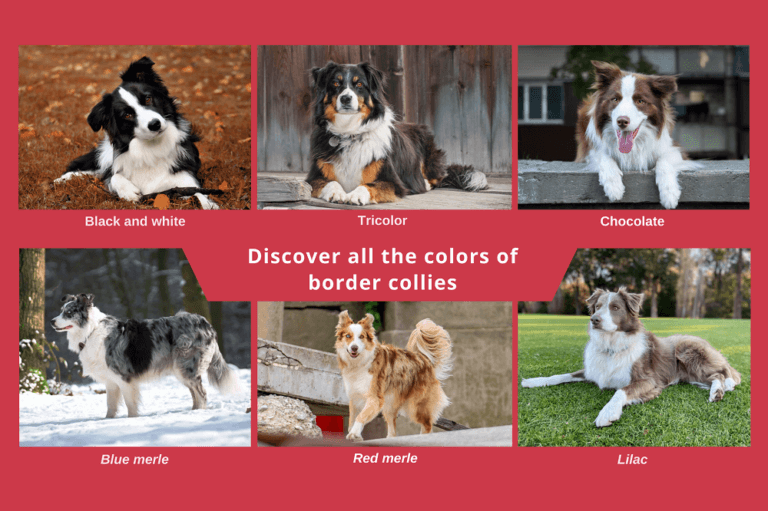

Written and verified by the psychologist Sara González Juárez
Did you know that the colors of border collies aren’t limited to black and white? You may have come across brown or gray coats in this breed, but the truth is that there are many varieties accepted by the Fédération Cynologique Internationale (FCI) and the American Kennel Club (AKC).
These wonderful canines are the best companions someone with an active lifestyle could have. If you’re curious about all the coat colors they can exhibit, here you’ll find the list you need to keep getting to know this dog breed better. Don’t miss a thing!
Colors of Border collies accepted by the FCI and AKC
The genetics that influence the coat coloration of these dogs are interesting and complex. According to a study published in the journal Animal Genetics, cells called melanocytes, which produce a protein known as melanin, are responsible for the color of the following mammalian body parts:
- Skin
- Hair
- Eyes
In dogs, up to 15 genes related to coat color are known, of which MC1R, ASIP, and CBD103 stand out. Complex interactions between these genes determine the type and amount of melanin produced.
According to the Fédération Cynologique Internationale (FCI), in border collies, the base color will always be white -with some exceptions-, but this color shouldn’t predominate. Various combinations are acceptable. Below, you’ll find the most common ones, as stated by this canine organization and the American Kennel Club (AKC).
1. Black and white
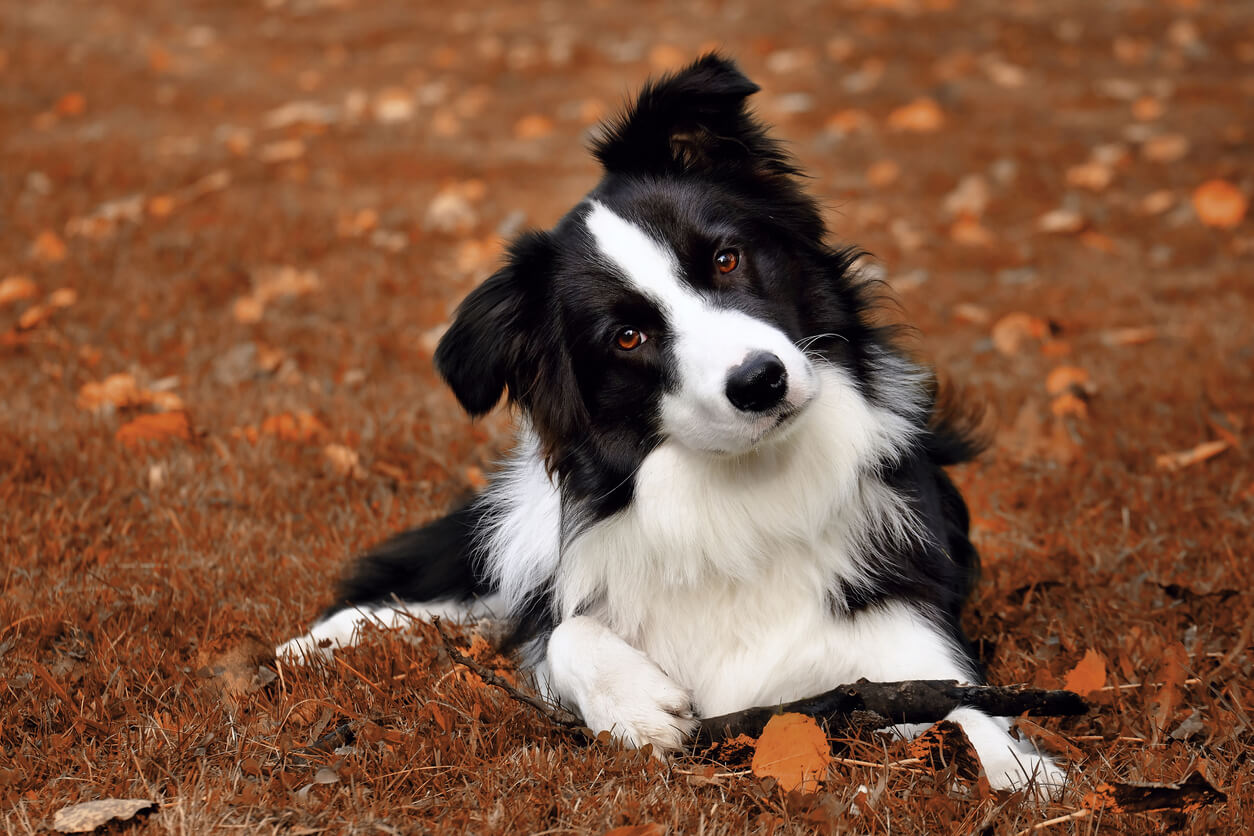
This is the most common coat you’ll find. The black spots on the white background don’t usually follow any pattern. Because they’re random, they make each specimen unique.
2. Tricolor
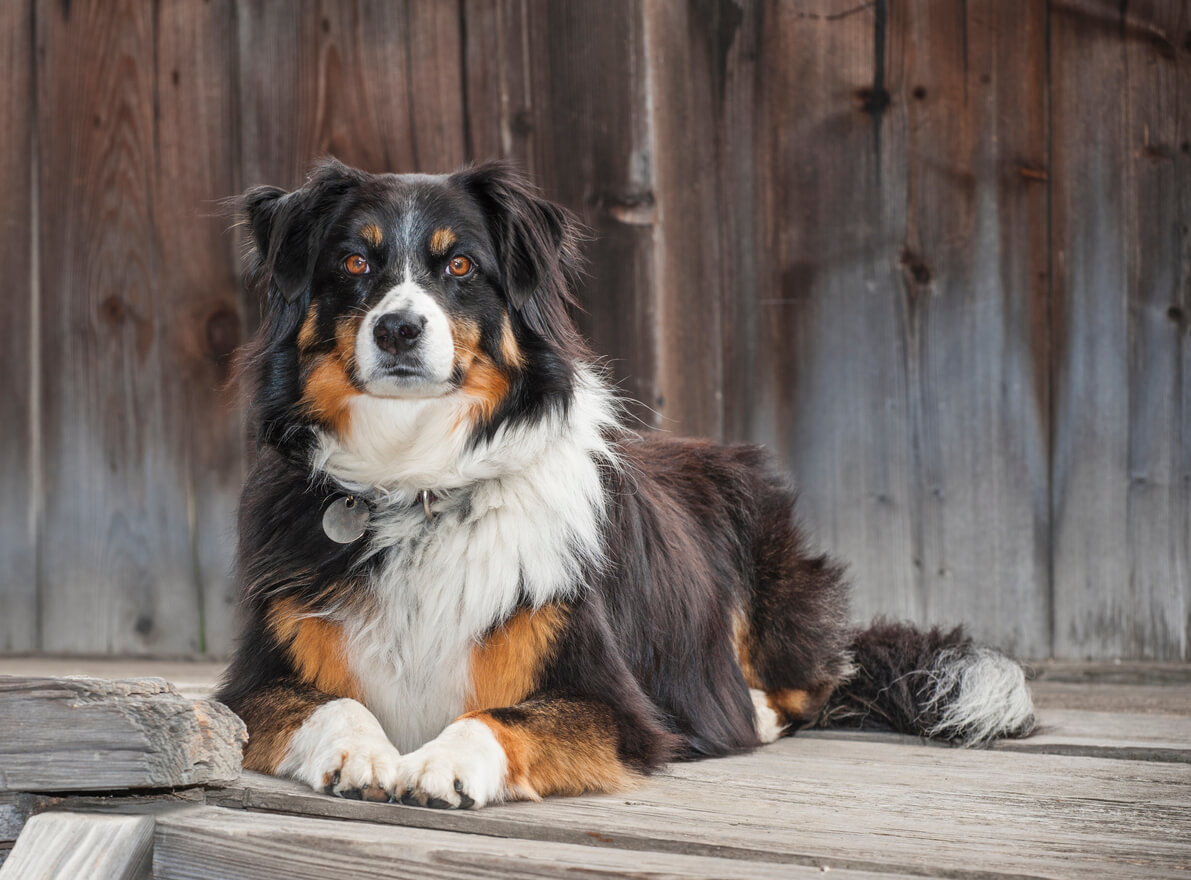
In this variety, three colors are found instead of two:
- Black
- White (background)
- Cream or brown (occurs mostly bordering the black spots)
3. Chocolate
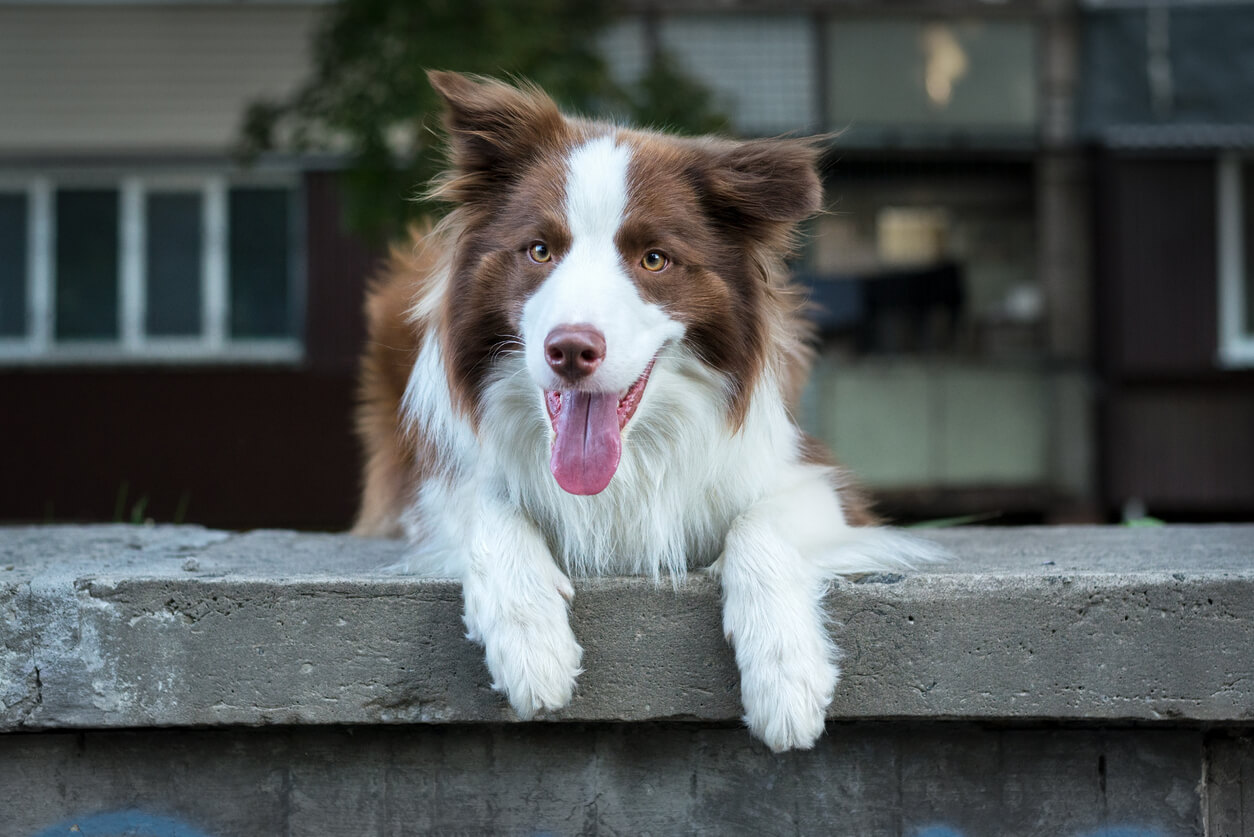
This variety is similar to black and white border collies, but the black areas are replaced by dark brown. This combination carries with it a small chance that the dog will be born with heterochromia, that is, with different colored eyes. It’s caused by a recessive gene (bb), so this is infrequent.
4. Chocolate tricolor

In these animals, the dark brown color is diluted in random areas of the coat, thus generating a lighter brown. In this way, these shades are distinguishable instead of two.
5. Blue merle
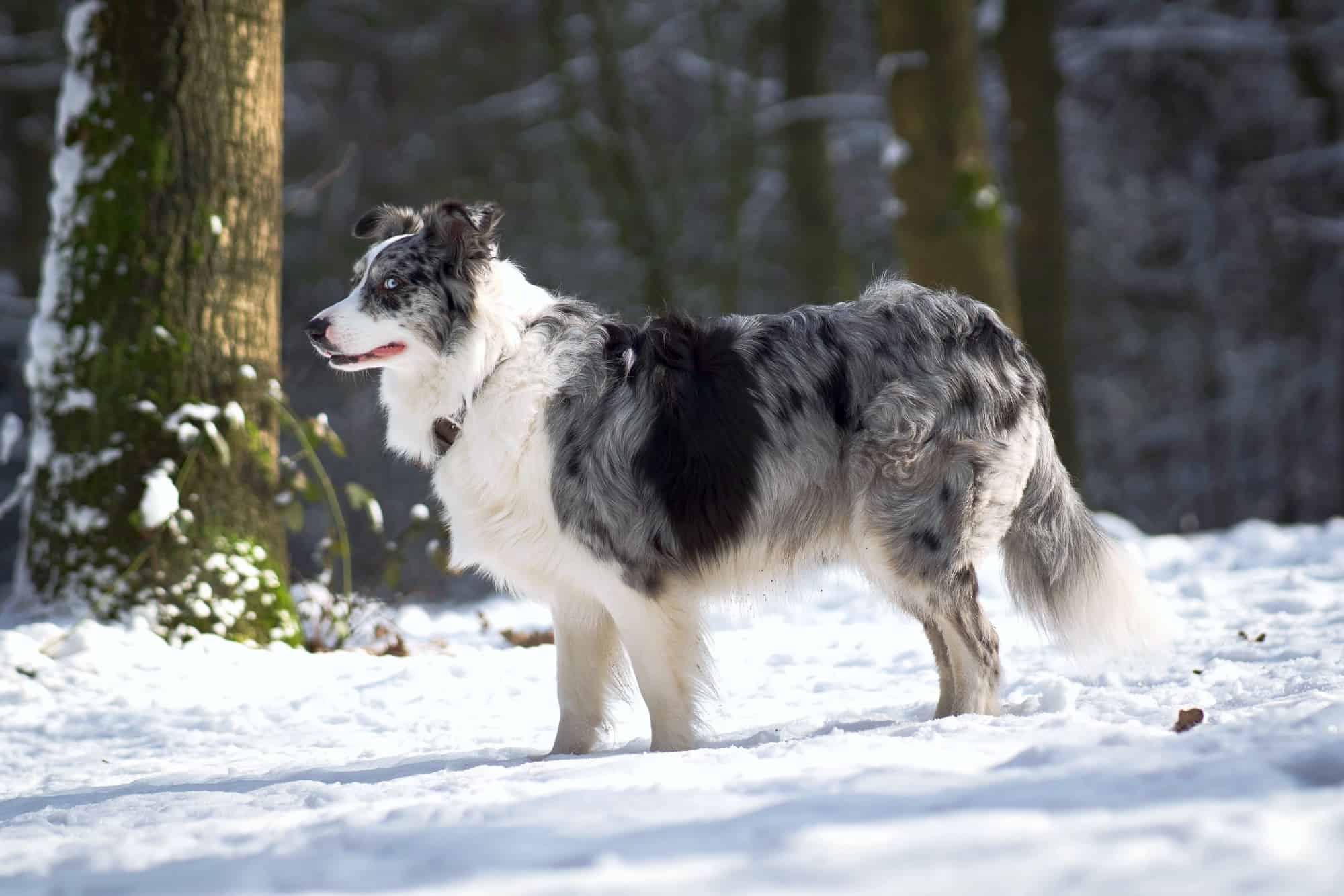
Similar to black and white border collies, but with the black diluted. This effect produces a bluish-grayish mottled color in random areas of the black spots, giving the impression of three colors. When dogs exhibit this coloration, it’s because one of their parents is merle.
6. Blue merle tricolor
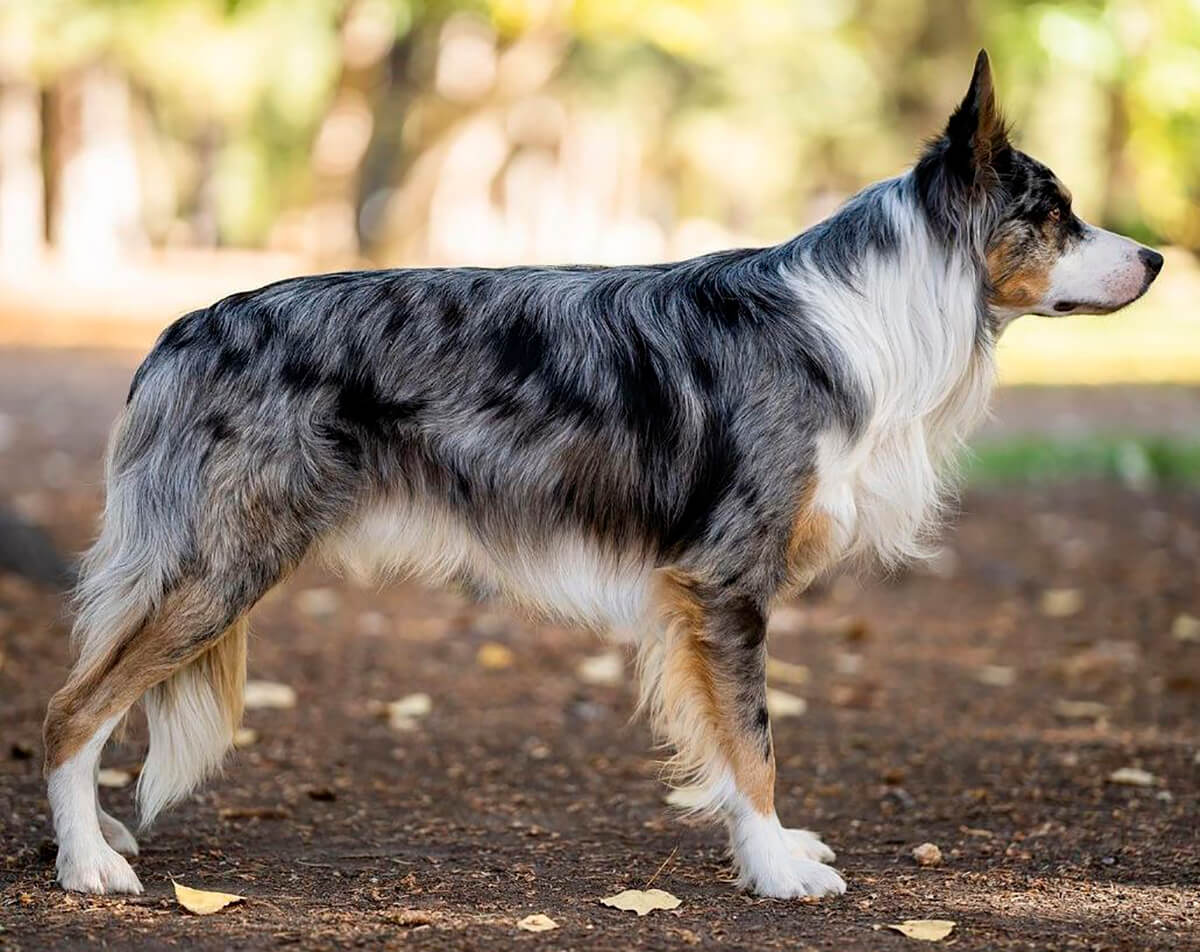
This variation of the above is very interesting, consisting of a dominant grayish (bluish) color, splashed with white and brown. The nose is also usually lighter in color than that of border collies with other colors.
7. Seal

It’s easy to confuse this variation with black and white, as the pattern is similar. However, rather than black, these dogs have a very dark brown color set against a white background.
8. Seal merle

This is another of the border collie colors that combines three shades:
- Black
- Sand color
- White base
It’s easy to find a gradient in some specimens, going from darker to white, through light brown.
9. Black
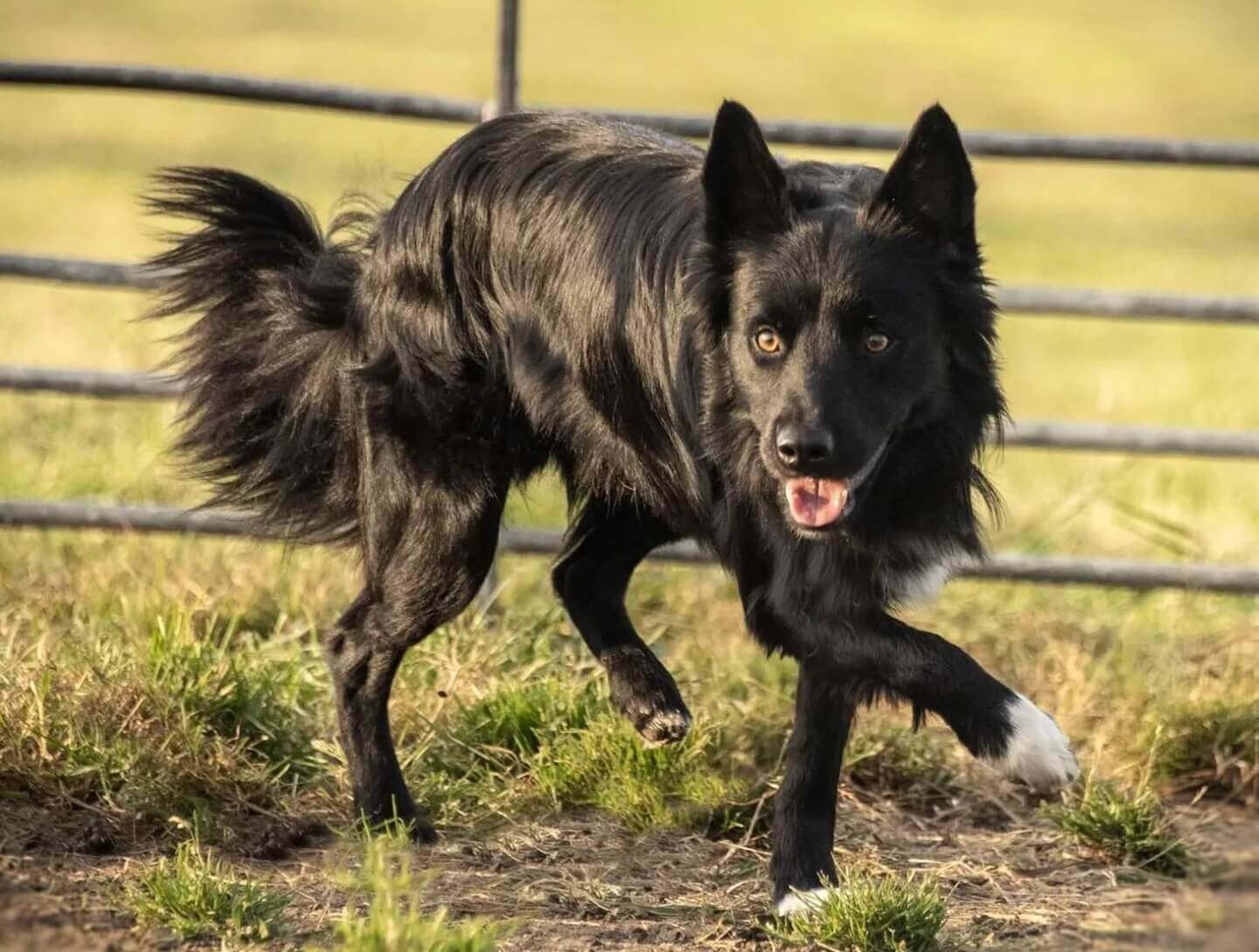
Border collies with a black coat may have white markings in some areas:
- Tail
- Paws
- Chest
- Head
Despite this, they differ from canines of this breed that exhibit a black and white coat.
10. One of the rarest colors in border collies is red merle
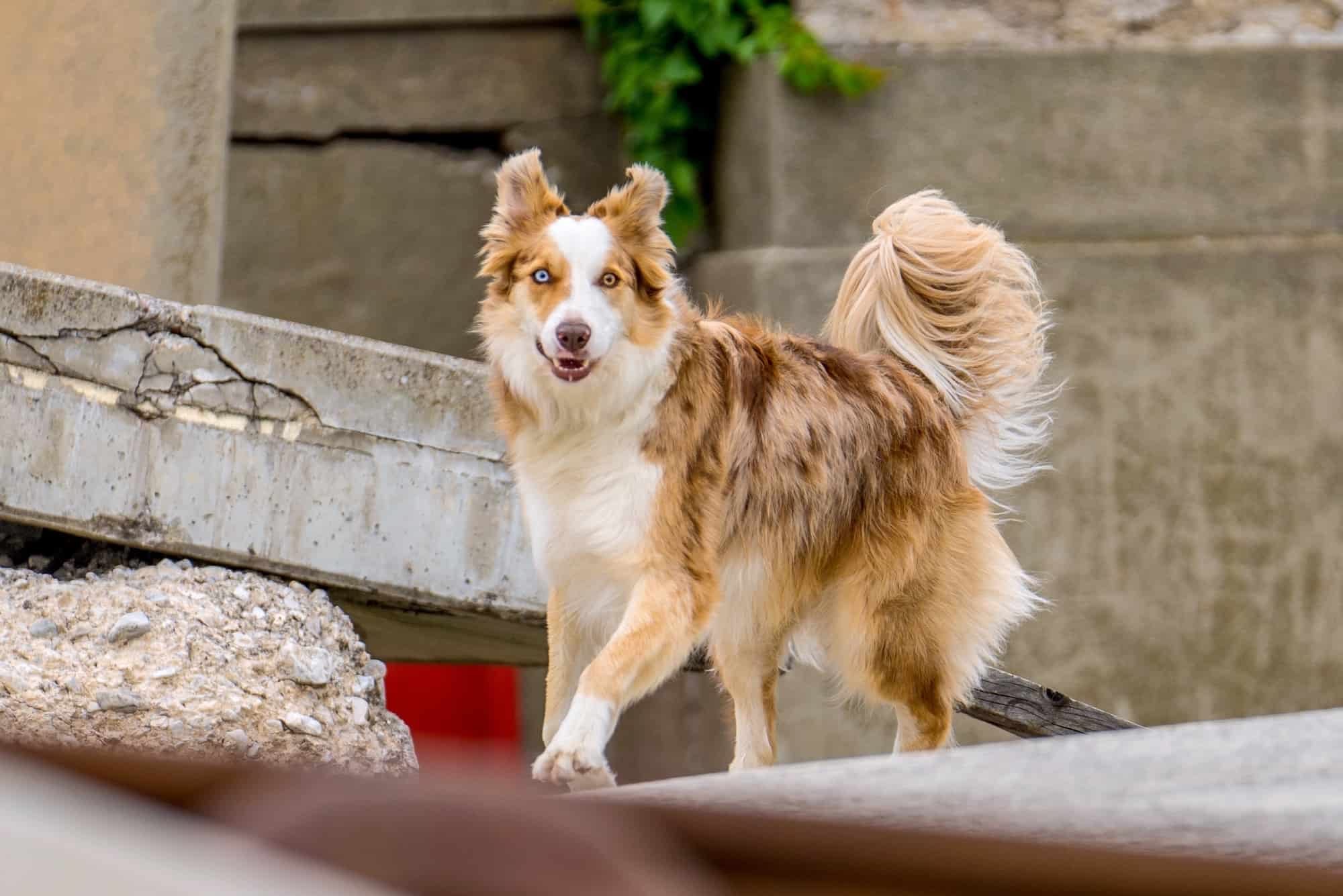
This time, we break the first rule above: Instead of having white as the base color, we find brown, in a light reddish tone. This combines irregularly with the white. This is a rather rare phenotype to find.
11. Red merle tricolor
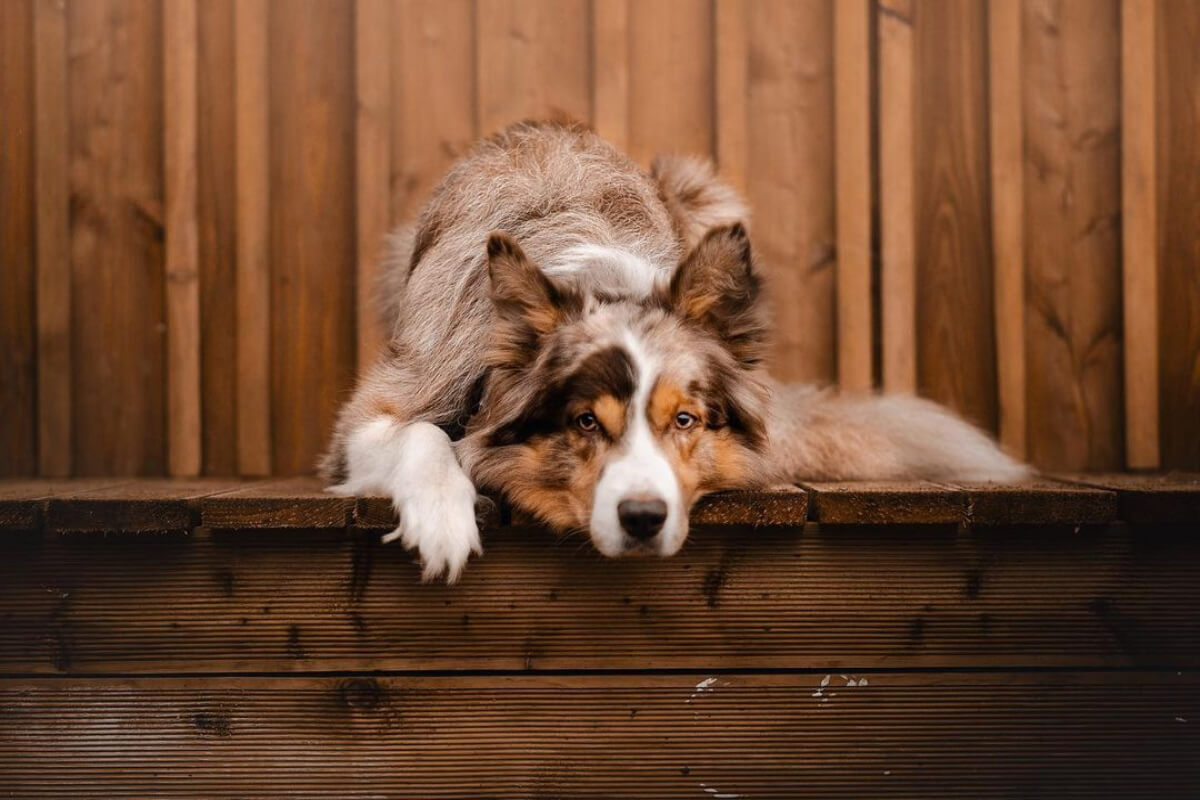
This variation of red merle generates a color base that is, again, white, adding black and reddish. It’s possible to find different shades of brown and even some black lines.
12. Sable
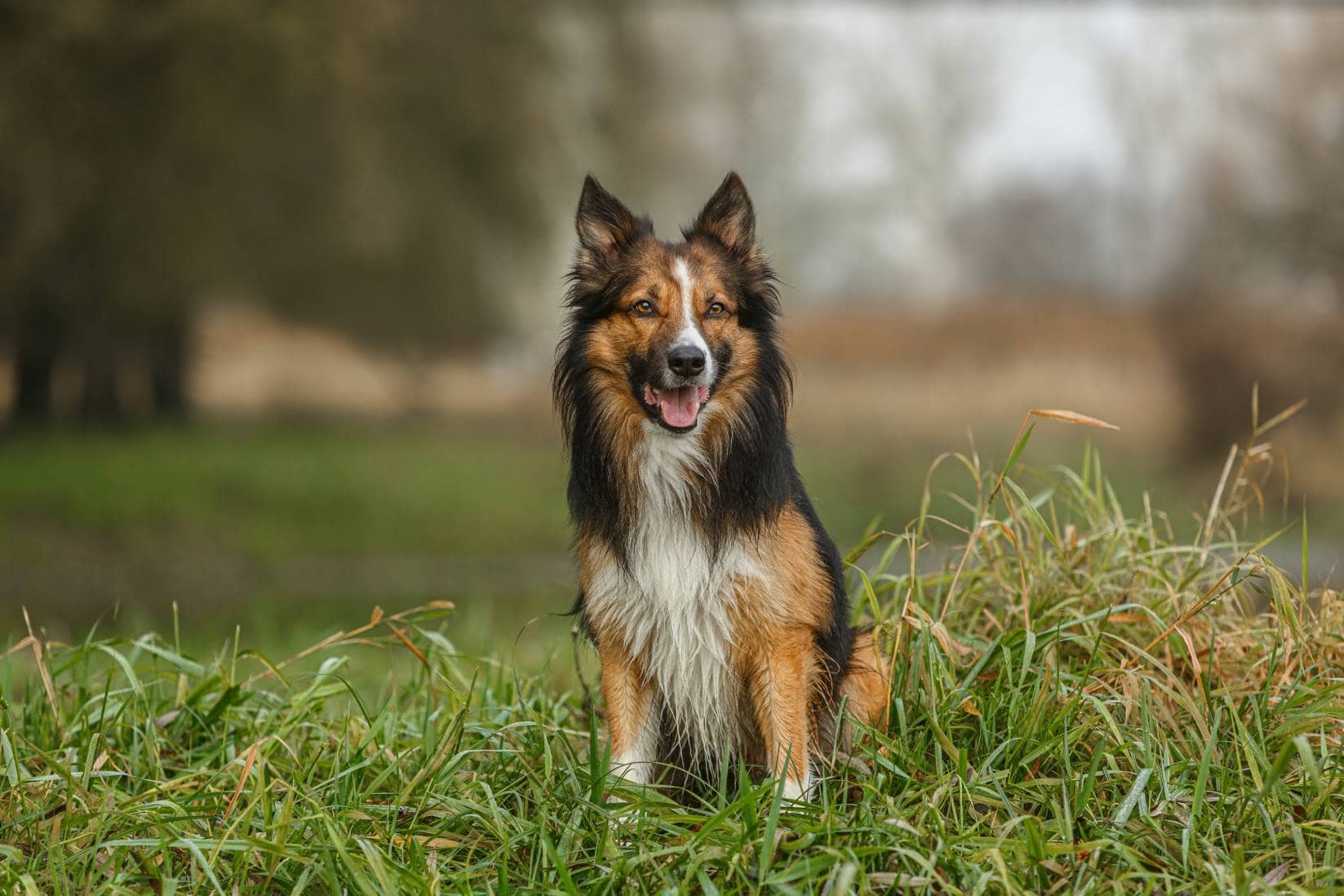
Sable consists of a brownish, somewhat coppery hue that darkens to the tip of each hair. Thus, the overall appearance is of reddish patches varying in clarity in a graded manner, always on a white background.
13. Sable merle
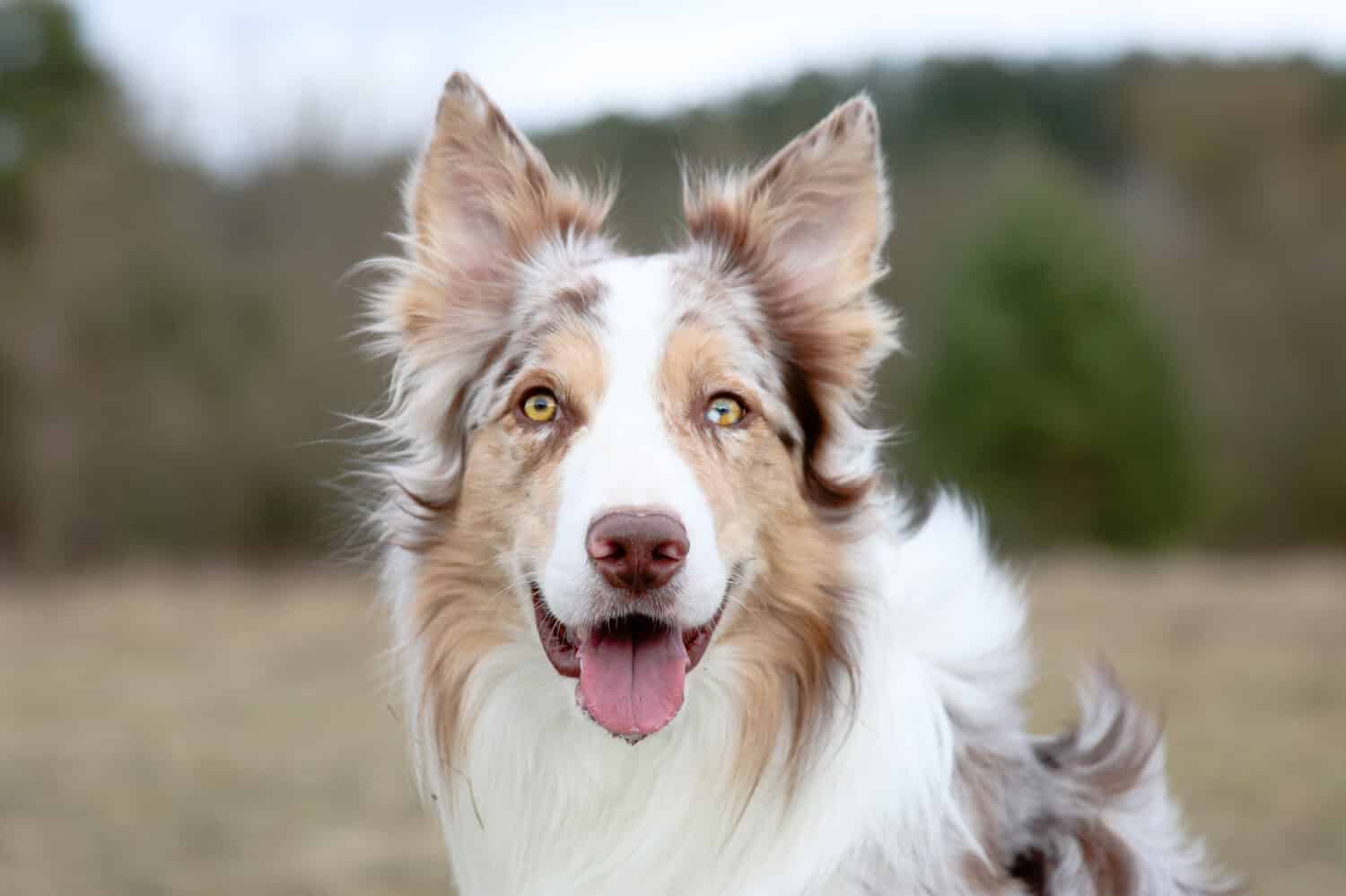
As with other merle variations, a recessive gene produces dilution of the main color. Thus, variations are created within the copper spots, so that dark brown, sable, and white are found.
14. Lilac, one of the most beautiful border collie colors

Although not a lilac color as such, but a lightened brown, this is one of the most sought-after colors in border collies. This color is obtained when the brown color is genetically diluted and lightened further on the white coat.
The nose of these dogs is also usually light-colored, showing that the mutation is expressed on all melanocytes.
15. Lilac merle
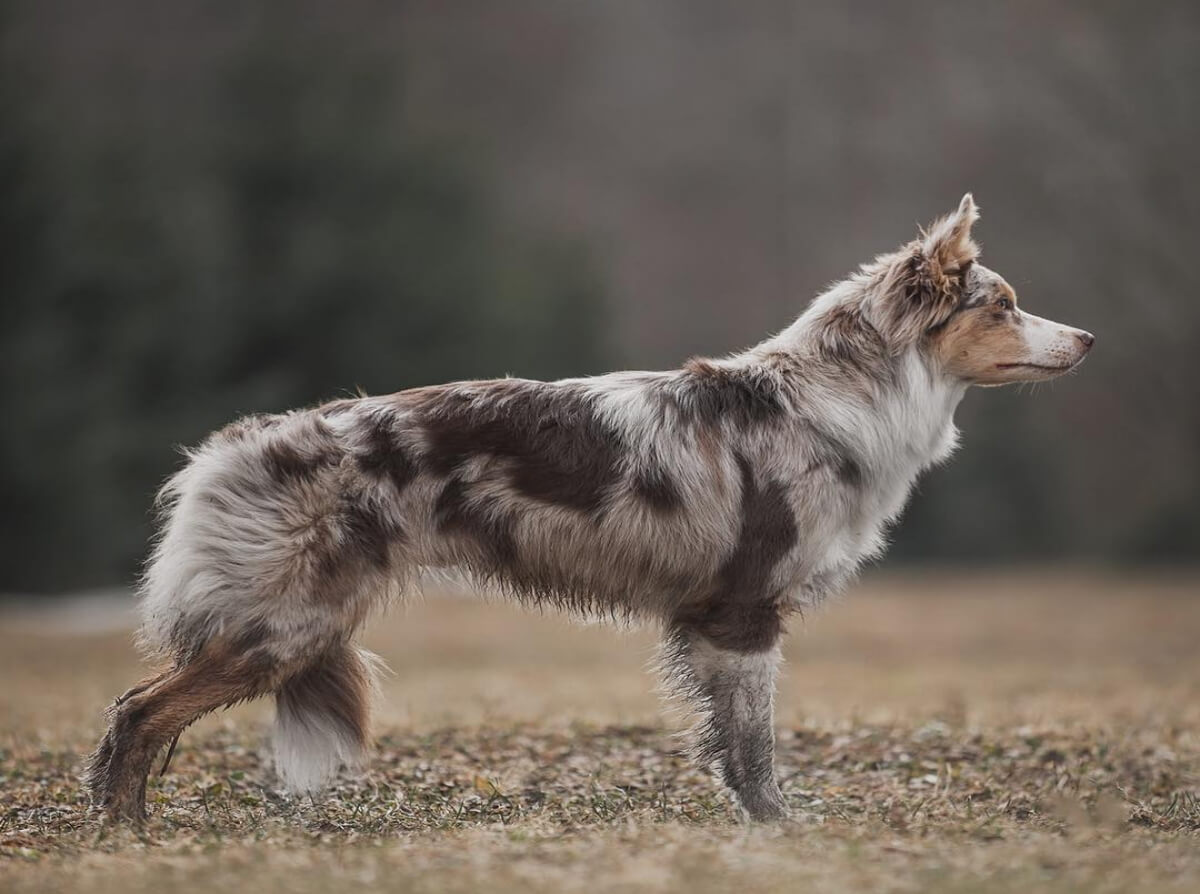
Again, there’s a dilution of the brown color in its dominant form. This generates patches of darker lilac. Thus, the pattern remains irregular and looks like three different colors.
16. ee-red (Australian red)
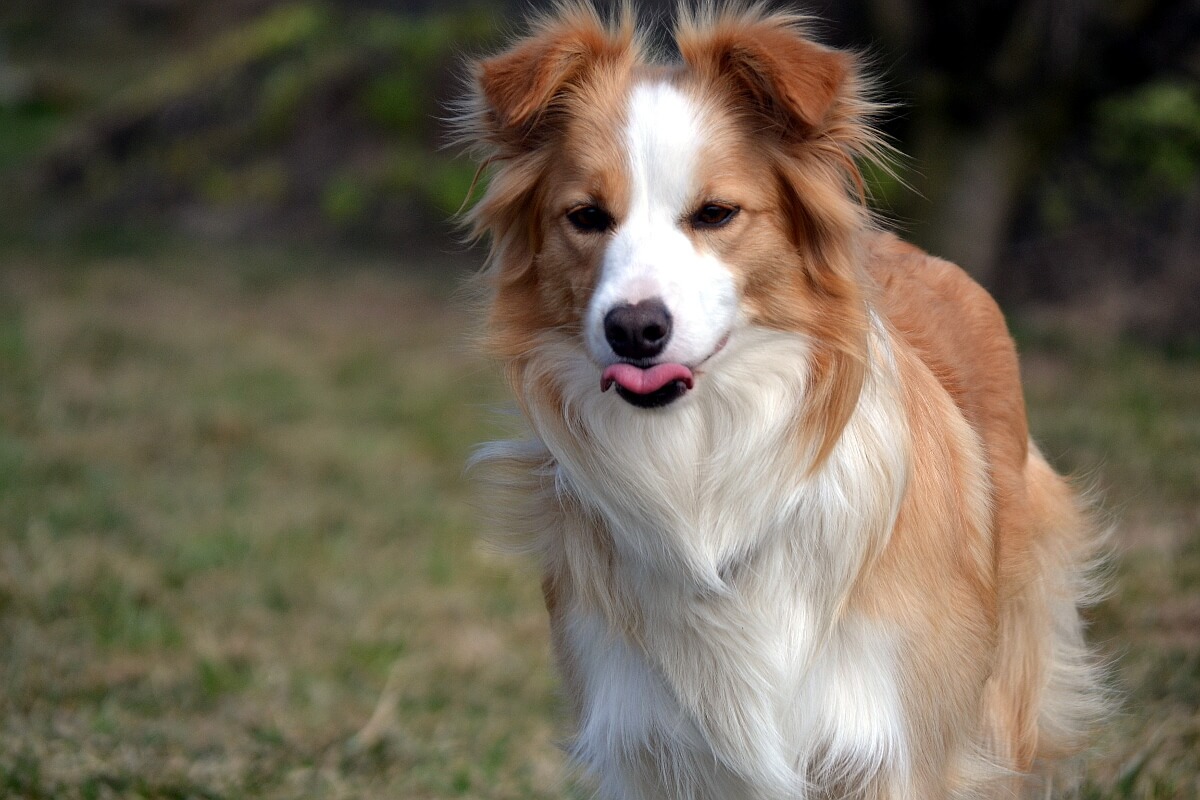
This border collie color is one of the most interesting. Here, it’s not clear which color is the base color and which are the patches, as a genetic test would be needed to find out. This variation appears masking other colors and is always shown in blond tones. Because of this, the following subtypes are distinguished:
- Black: Black base +blond.
- Chocolate
- Blue: Bluish base +blonde.
- Merle: A solid red is observed, which is likely to be the base.
- Sable or lilac: There are rare cases where the red masks these variations.
17. Brindle
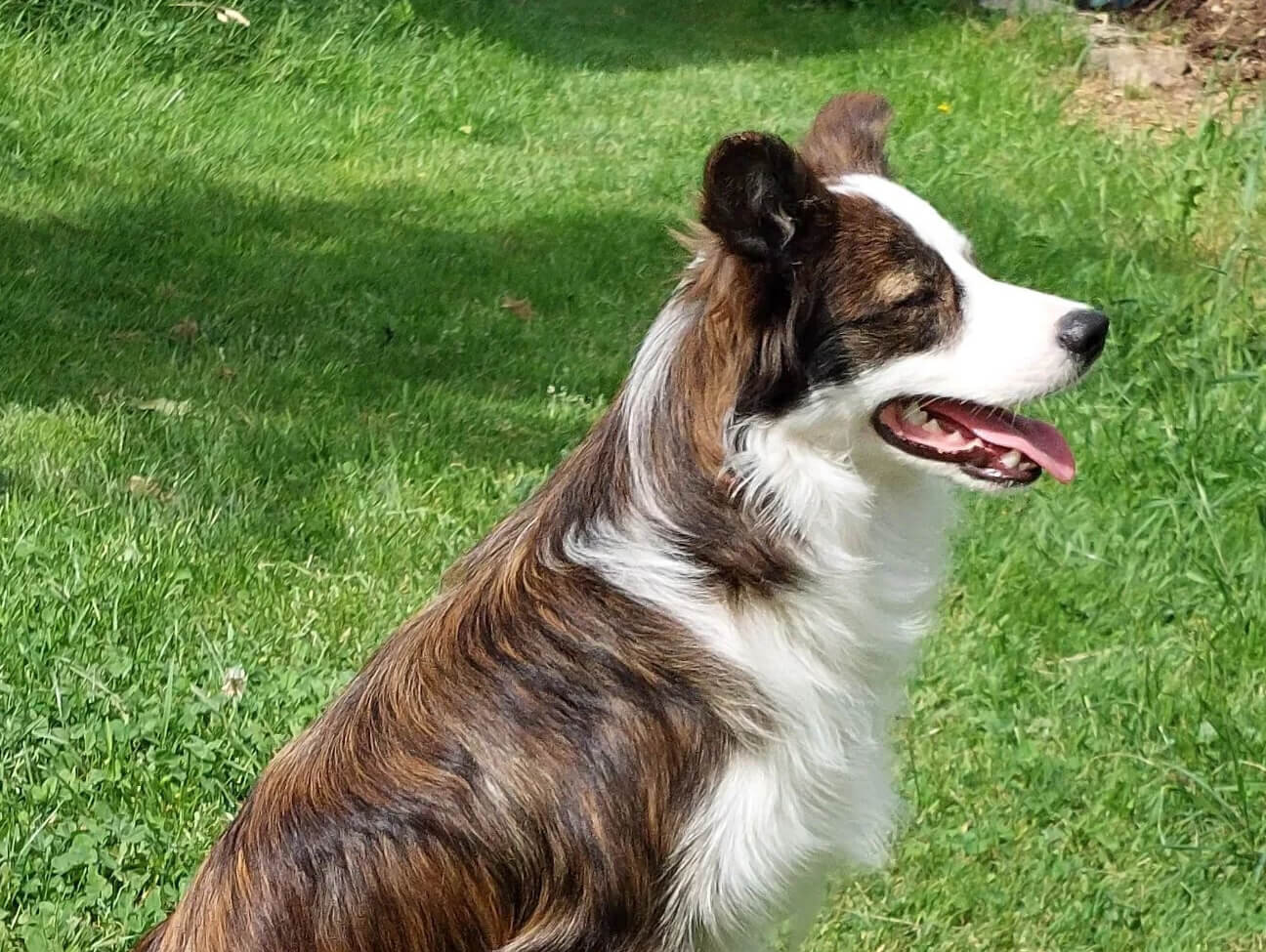
This color, listed by the AKC, combines tufts of black and brown. It’s possible to find it combined with white, creating patchwork patterns. In some cases, the lighter brown takes on reddish tones.
The only border collie color not accepted is white
Since those border collies with this plain coloration are albinos, they’re not accepted as a color per se. These specimens have blue or red eyes and a pink nose, as they have very little or no pigmentation. It’s important not to be fooled in this regard, as this genetic mutation is accompanied by several health problems.
Did you know about all of these border collie colors? If you’re thinking of adopting one of these amazing canines, remember that each pattern is unique, just like their personality. Whatever the name of its coat, each dog is unique and special.
Did you know that the colors of border collies aren’t limited to black and white? You may have come across brown or gray coats in this breed, but the truth is that there are many varieties accepted by the Fédération Cynologique Internationale (FCI) and the American Kennel Club (AKC).
These wonderful canines are the best companions someone with an active lifestyle could have. If you’re curious about all the coat colors they can exhibit, here you’ll find the list you need to keep getting to know this dog breed better. Don’t miss a thing!
Colors of Border collies accepted by the FCI and AKC
The genetics that influence the coat coloration of these dogs are interesting and complex. According to a study published in the journal Animal Genetics, cells called melanocytes, which produce a protein known as melanin, are responsible for the color of the following mammalian body parts:
- Skin
- Hair
- Eyes
In dogs, up to 15 genes related to coat color are known, of which MC1R, ASIP, and CBD103 stand out. Complex interactions between these genes determine the type and amount of melanin produced.
According to the Fédération Cynologique Internationale (FCI), in border collies, the base color will always be white -with some exceptions-, but this color shouldn’t predominate. Various combinations are acceptable. Below, you’ll find the most common ones, as stated by this canine organization and the American Kennel Club (AKC).
1. Black and white

This is the most common coat you’ll find. The black spots on the white background don’t usually follow any pattern. Because they’re random, they make each specimen unique.
2. Tricolor

In this variety, three colors are found instead of two:
- Black
- White (background)
- Cream or brown (occurs mostly bordering the black spots)
3. Chocolate

This variety is similar to black and white border collies, but the black areas are replaced by dark brown. This combination carries with it a small chance that the dog will be born with heterochromia, that is, with different colored eyes. It’s caused by a recessive gene (bb), so this is infrequent.
4. Chocolate tricolor

In these animals, the dark brown color is diluted in random areas of the coat, thus generating a lighter brown. In this way, these shades are distinguishable instead of two.
5. Blue merle

Similar to black and white border collies, but with the black diluted. This effect produces a bluish-grayish mottled color in random areas of the black spots, giving the impression of three colors. When dogs exhibit this coloration, it’s because one of their parents is merle.
6. Blue merle tricolor

This variation of the above is very interesting, consisting of a dominant grayish (bluish) color, splashed with white and brown. The nose is also usually lighter in color than that of border collies with other colors.
7. Seal

It’s easy to confuse this variation with black and white, as the pattern is similar. However, rather than black, these dogs have a very dark brown color set against a white background.
8. Seal merle

This is another of the border collie colors that combines three shades:
- Black
- Sand color
- White base
It’s easy to find a gradient in some specimens, going from darker to white, through light brown.
9. Black

Border collies with a black coat may have white markings in some areas:
- Tail
- Paws
- Chest
- Head
Despite this, they differ from canines of this breed that exhibit a black and white coat.
10. One of the rarest colors in border collies is red merle

This time, we break the first rule above: Instead of having white as the base color, we find brown, in a light reddish tone. This combines irregularly with the white. This is a rather rare phenotype to find.
11. Red merle tricolor

This variation of red merle generates a color base that is, again, white, adding black and reddish. It’s possible to find different shades of brown and even some black lines.
12. Sable

Sable consists of a brownish, somewhat coppery hue that darkens to the tip of each hair. Thus, the overall appearance is of reddish patches varying in clarity in a graded manner, always on a white background.
13. Sable merle

As with other merle variations, a recessive gene produces dilution of the main color. Thus, variations are created within the copper spots, so that dark brown, sable, and white are found.
14. Lilac, one of the most beautiful border collie colors

Although not a lilac color as such, but a lightened brown, this is one of the most sought-after colors in border collies. This color is obtained when the brown color is genetically diluted and lightened further on the white coat.
The nose of these dogs is also usually light-colored, showing that the mutation is expressed on all melanocytes.
15. Lilac merle

Again, there’s a dilution of the brown color in its dominant form. This generates patches of darker lilac. Thus, the pattern remains irregular and looks like three different colors.
16. ee-red (Australian red)

This border collie color is one of the most interesting. Here, it’s not clear which color is the base color and which are the patches, as a genetic test would be needed to find out. This variation appears masking other colors and is always shown in blond tones. Because of this, the following subtypes are distinguished:
- Black: Black base +blond.
- Chocolate
- Blue: Bluish base +blonde.
- Merle: A solid red is observed, which is likely to be the base.
- Sable or lilac: There are rare cases where the red masks these variations.
17. Brindle

This color, listed by the AKC, combines tufts of black and brown. It’s possible to find it combined with white, creating patchwork patterns. In some cases, the lighter brown takes on reddish tones.
The only border collie color not accepted is white
Since those border collies with this plain coloration are albinos, they’re not accepted as a color per se. These specimens have blue or red eyes and a pink nose, as they have very little or no pigmentation. It’s important not to be fooled in this regard, as this genetic mutation is accompanied by several health problems.
Did you know about all of these border collie colors? If you’re thinking of adopting one of these amazing canines, remember that each pattern is unique, just like their personality. Whatever the name of its coat, each dog is unique and special.
All cited sources were thoroughly reviewed by our team to ensure their quality, reliability, currency, and validity. The bibliography of this article was considered reliable and of academic or scientific accuracy.
- American Kennel Club. (s.f.). Border collie dog breed information. Consultado el 25 de septiembre de 2023. https://www.akc.org/dog-breeds/border-collie/
- Brancalion, L., Haase, B., & Wade, C. M. (2022). Canine coat pigmentation genetics: a review. Animal Genetics, 53(1), 3–34. https://pubmed.ncbi.nlm.nih.gov/34751460/
- Federación Cinológica Internacional. (2010). Border collie. Consultado el 24 de septiembre de 2023. https://www.fci.be/es/nomenclature/BORDER-COLLIE-297.html
- Schmutz, S. M., & Berryere, T. G. (2007). Genes affecting coat colour and pattern in domestic dogs: a review. Animal Genetics, 38(6), 539-549.
- Varga, L., Lénárt, X., Zenke, P., Orbán, L., Hudák, P., Ninausz, N., … & Szőke, A. (2020). Being merle: the molecular genetic background of the canine merle mutation. Genes, 11(6), 660. https://pubmed.ncbi.nlm.nih.gov/32560567/
This text is provided for informational purposes only and does not replace consultation with a professional. If in doubt, consult your specialist.








